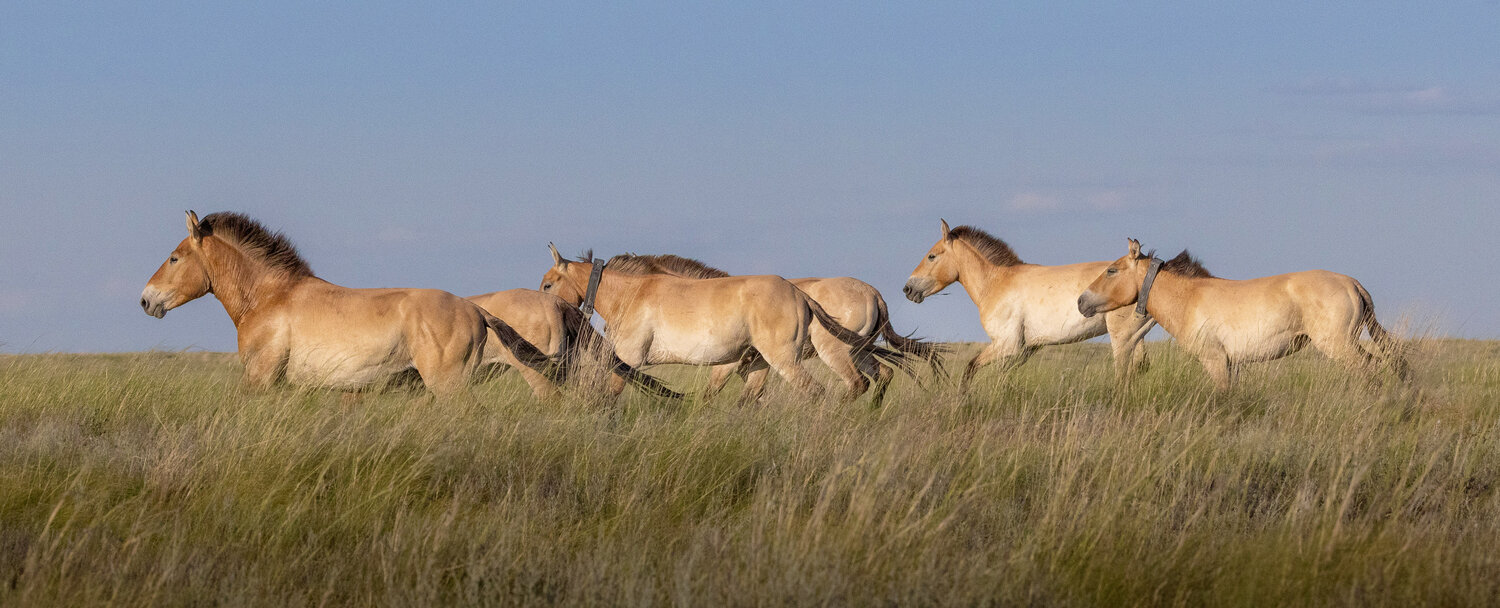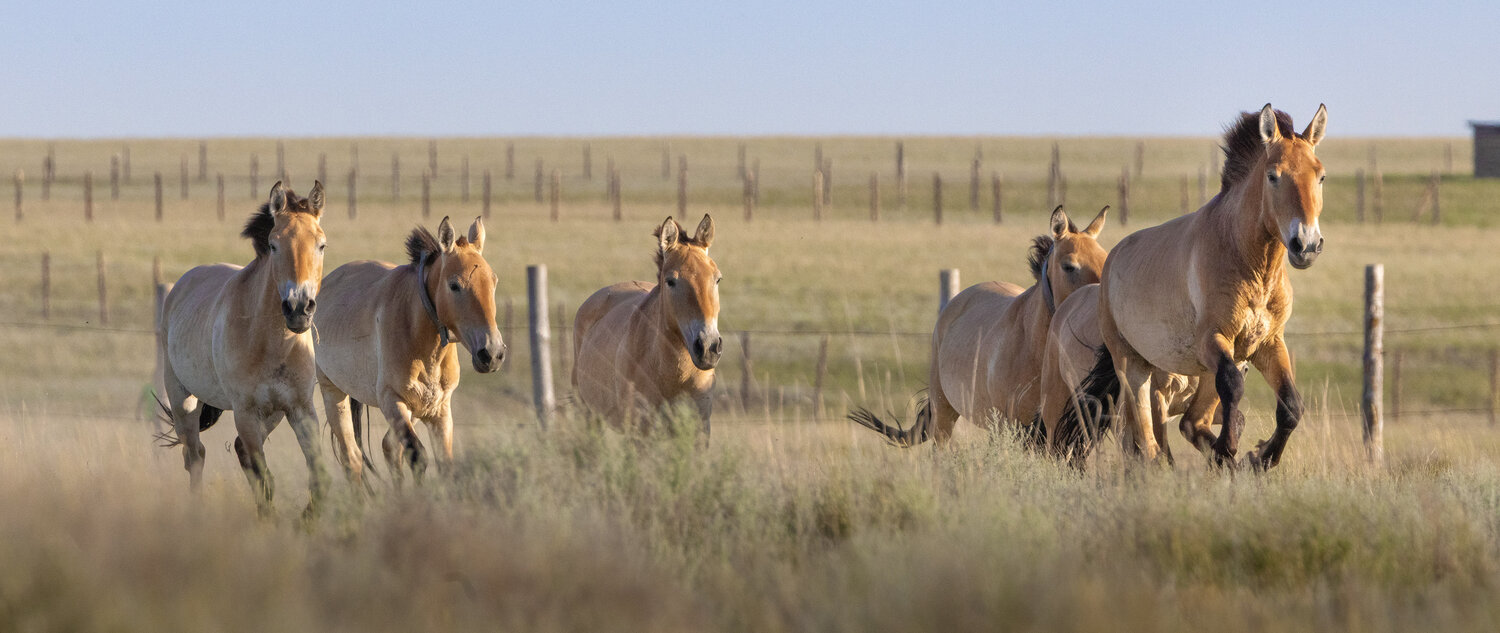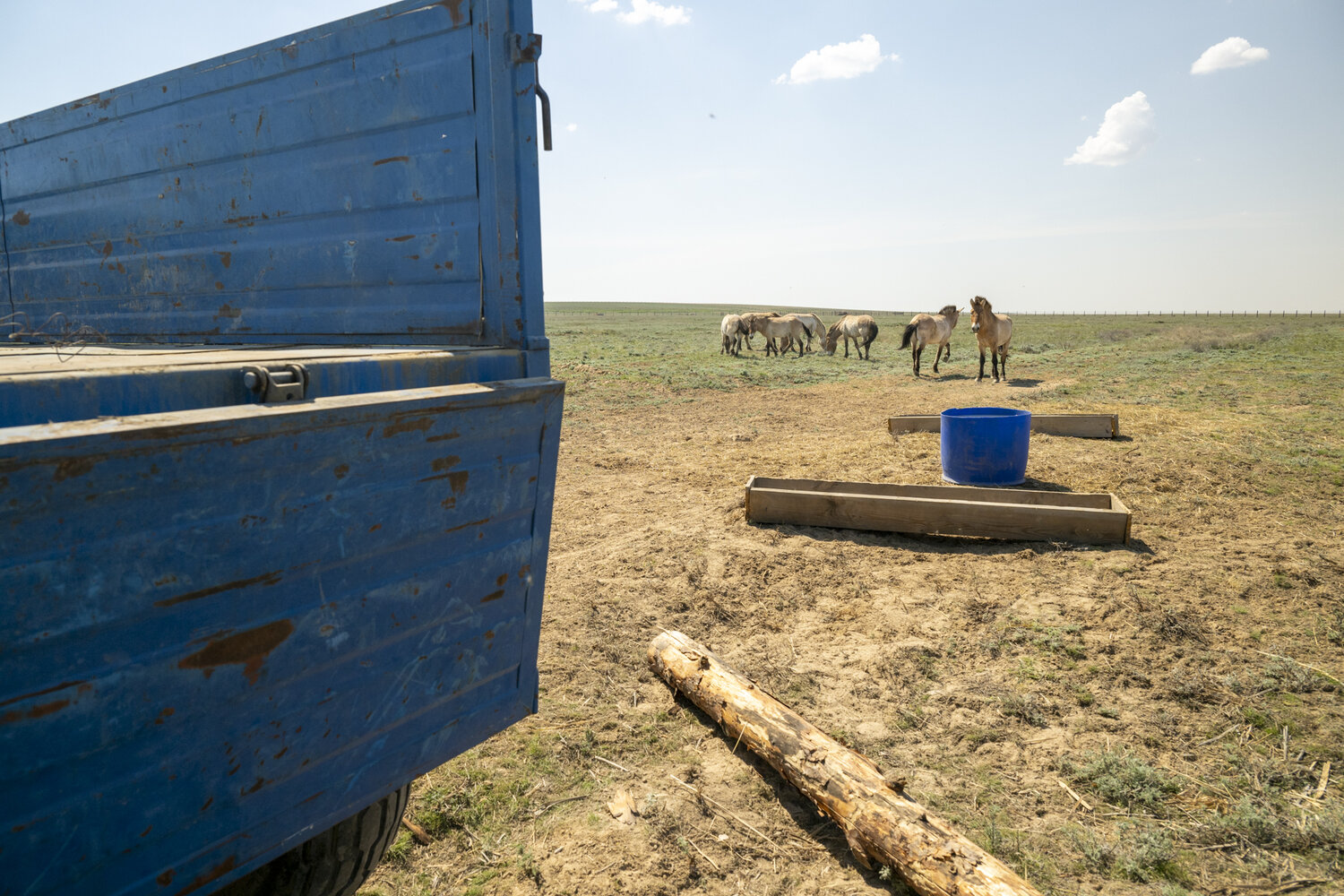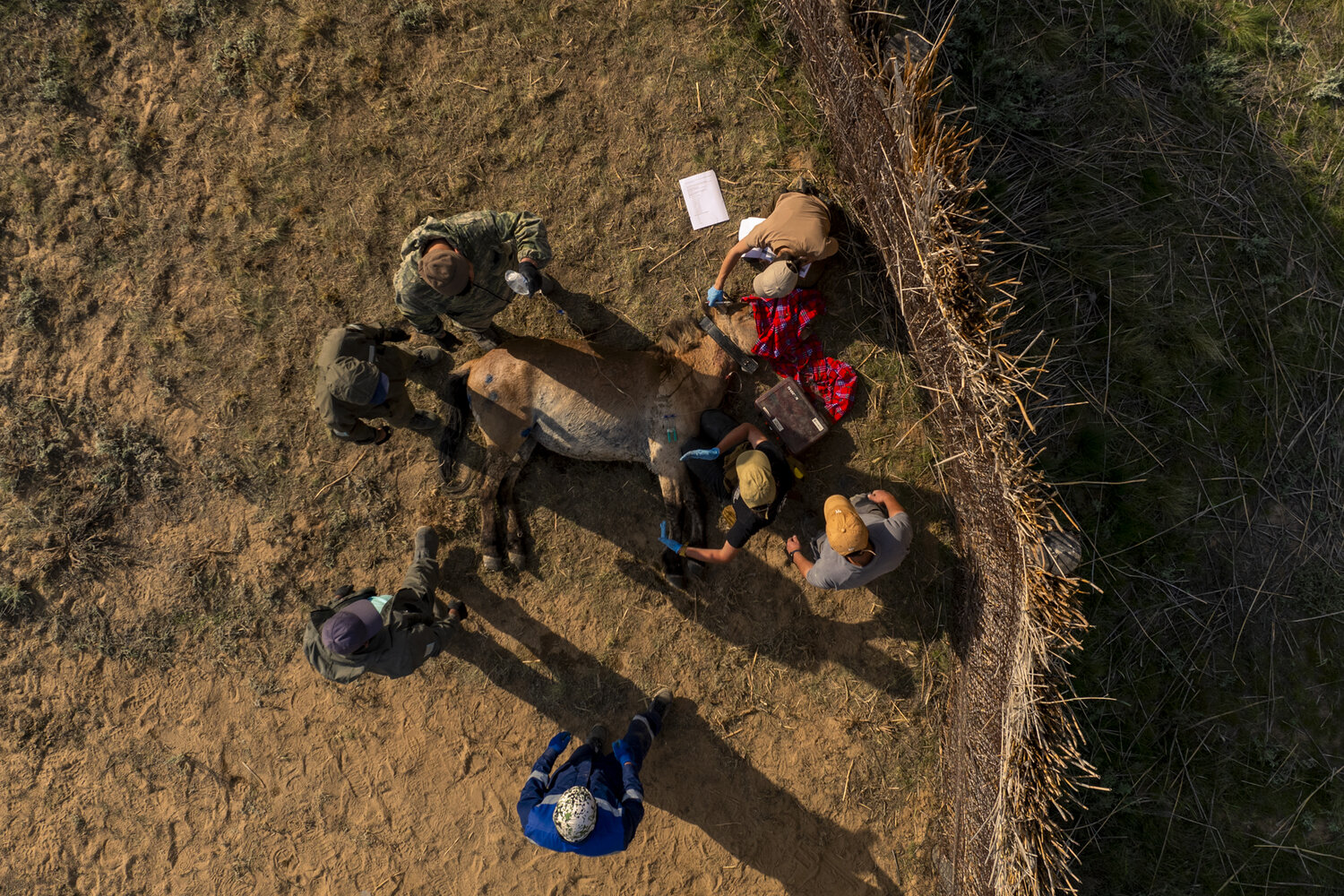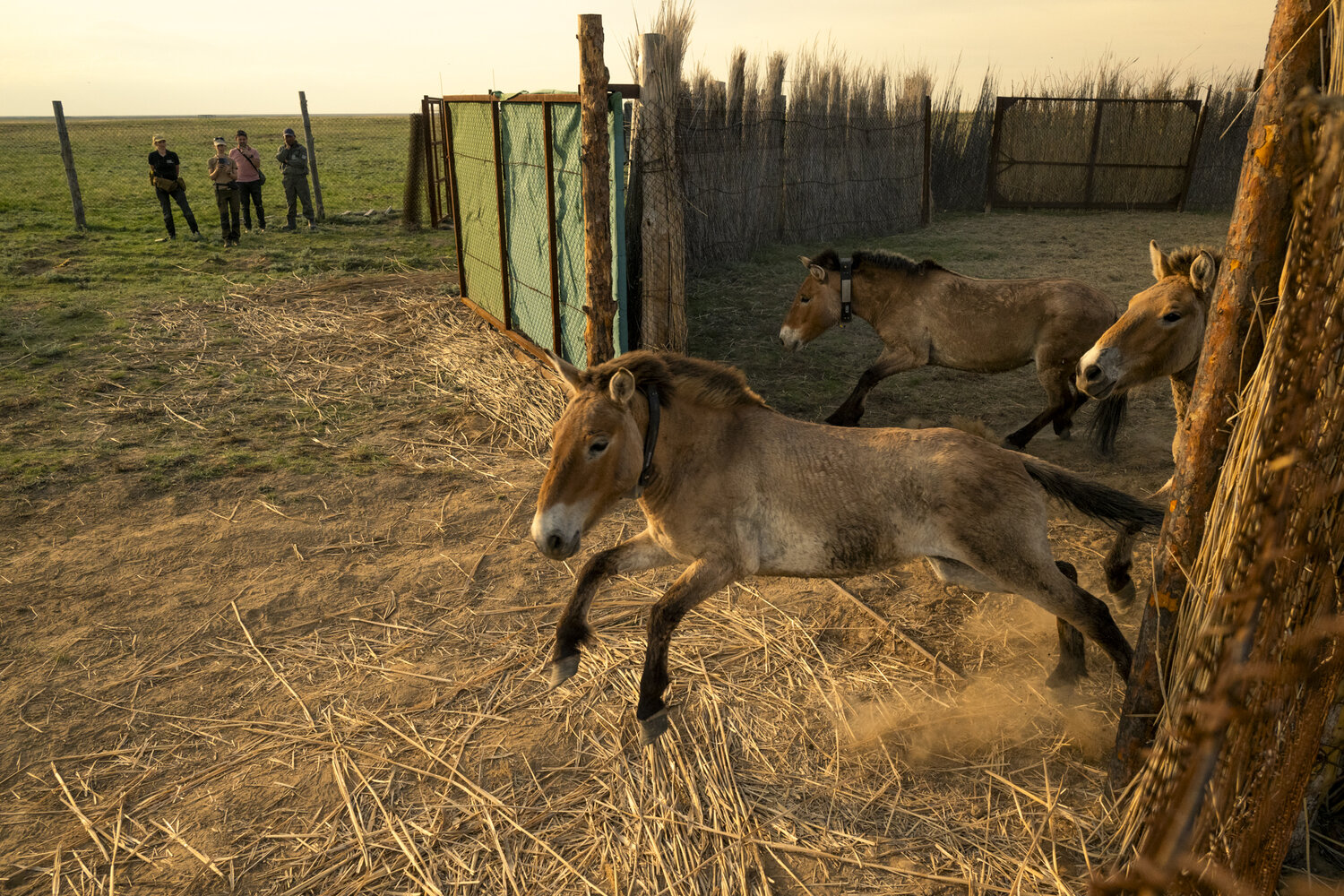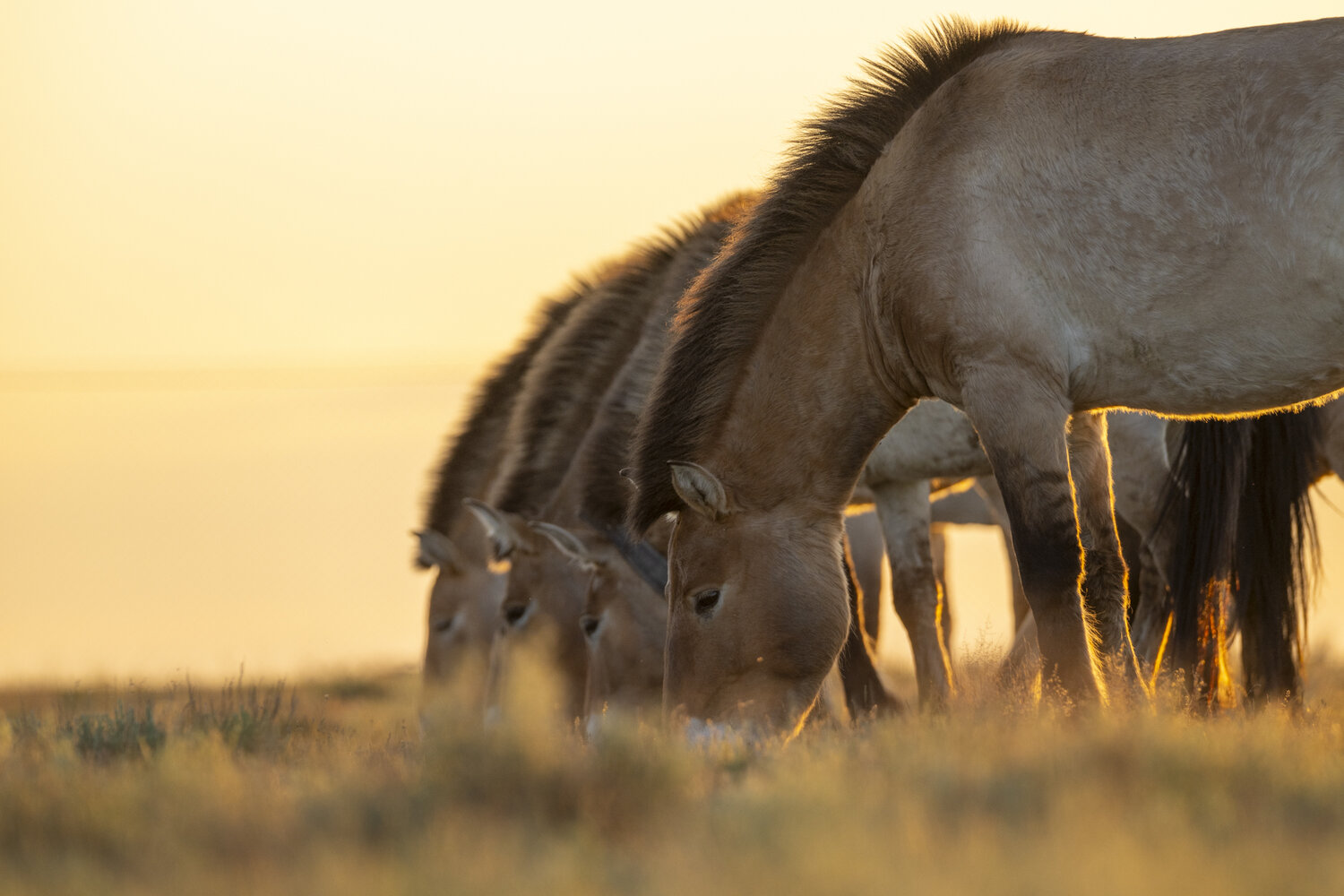This is a special moment for Zoo Berlin and its international partners: After months of acclimatization at the Alibi Reintroduction Centre in Kazakhstan, the gates have been opened — the wild horses from Berlin have now arrived in their new natural habitat. The animals are the first herd to move independently through the Altyn Dala Steppe — an area where their species was native over 200 years ago.
“Our horses have adapted well, and the herd has grown closely bonded over the past months,” reports Christian Kern, Zoological Director of Berlin Zoo and Tierpark, who personally accompanied the transport last year. “Seeing them now roaming through the steppe is an emotional moment for our entire team.” Dr. Andreas Knieriem, Director of Berlin Zoo and Tierpark, is also proud: “This project exemplifies modern species conservation — international, scientifically grounded, and long-term. That animals under our care are now helping to strengthen an entire ecosystem is a great honor for our work. Such successes motivate us every day anew.”
In spring 2024, four animals from Berlin were brought to Kazakhstan by the Czech Army planes together with three wild horses from Prague. They form the first herd of this species in Central Kazakhstan in over 200 years — a return to their historic range. With the opening of the gates, another milestone has been reached within the framework of the “Return of the Wild Horses” project. The Przewalski’s horse is considered the only true wild horse in the world. It had become extinct in the wild and survived only in zoological institutions. Thanks to an international breeding conservation program coordinated by Prague Zoo, the species was saved. Kazakhstan is thus the third country, after China and Mongolia, where Przewalski’s horses live again in their original habitat. To enable remote monitoring of the herd’s movements in the future, the two Berlin mares Umbra and Wespe were fitted with GPS collars.
“This is the highest aim any modern zoo can achieve,” says the Prague Zoo director Miroslav Bobek. “This follows not only a long series of similar air transports to western Mongolia, but also Prague zoo’s entire history, which is closely tied to the efforts to save this last species of wild horse and return its former habitat in Central Asia. The horses transported from European zoos and breeding institutions represent the basis for the local population in the wild. We will try to continue this demanding project in the coming years until there are enough individuals on site to create a viable and genetically diverse population.”
The Altyn Dala Steppe, with its vast grasslands, semi-deserts, and wetlands, offers ideal living conditions for a variety of wild animals — including saiga antelopes, kulan, steppe eagles, and now also Przewalski’s horses. As large grazers, they make an important contribution to biodiversity and ecosystem resilience.
“None of this would be possible without the initiative of Prague Zoo and the commitment of our Kazakh partners from the Association for the Conservation of Biodiversity of Kazakhstan,” emphasizes Christian Kern. “We are grateful for the trust and close cooperation — this project is an example of how international species conservation can succeed in practice.”
About the Project:
“Return of the Wild Horses” is a joint initiative led by Prague Zoo in cooperation with Berlin Tierpark, the Zoological Society Frankfurt (ZGF), the Association for the Conservation of Biodiversity of Kazakhstan (ACBK), the Kazakh Ministry of Environment, and other partners. The goal is the permanent reintroduction of the last true wild horses on earth into their natural habitat in Kazakhstan.
© Photos: Miroslav Bobek / Prague Zoo // Jon A Juarez, Leibniz – IZW / Tierpark Berlin
